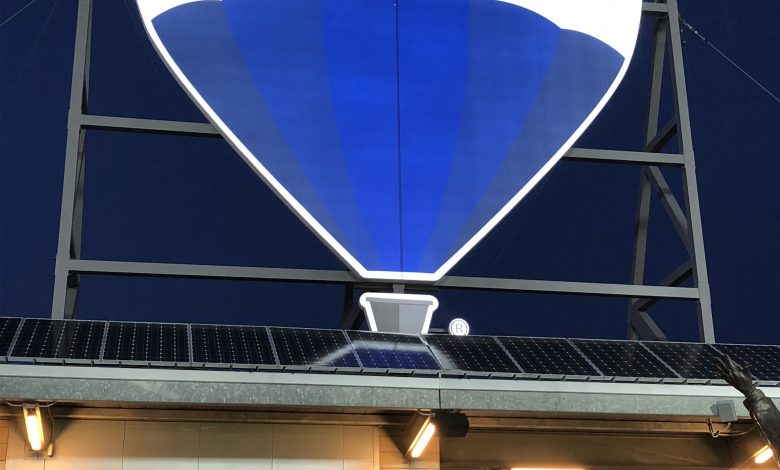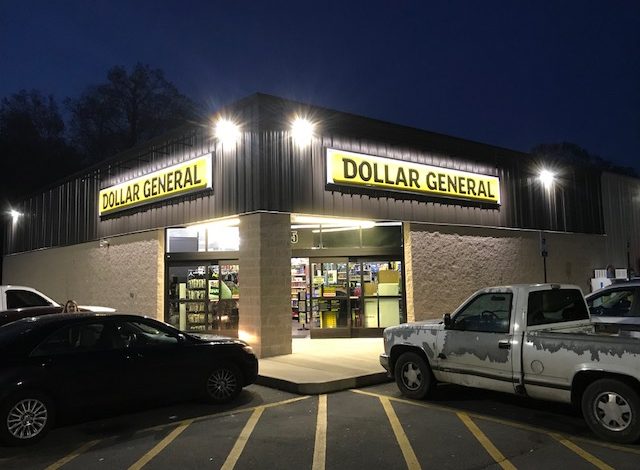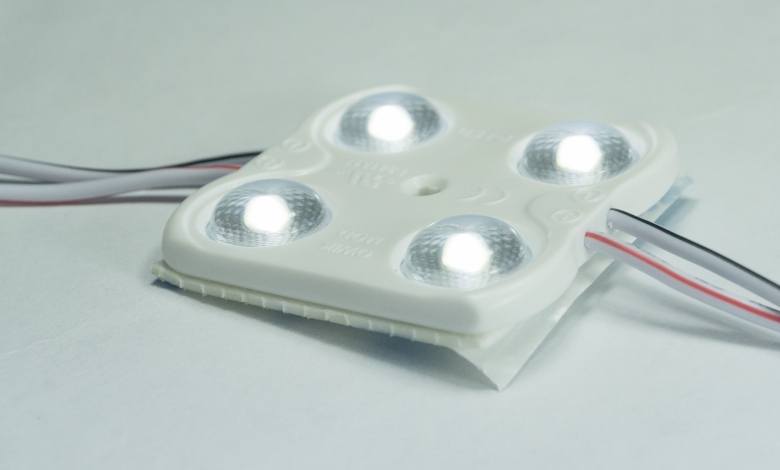LED Module Improvements
How improvements in LEDs have changed the landscape of illuminated signage
It is very interesting to think about how this world will function 20 or 30 years in the future. How will this industry look when the next generation of sign professionals takes the reins? And drilling down still further-how will the landscape of illuminated signage transform?
Conversely, think about the state of sign technology two or three decades ago. Recall when neon dominated electric signage. Back then neon lighting was a staple. Today, some might refer to such signage as “retro” or even a throwback to a more artistic era.
When LED technology gained momentum in the sign world, it provided a dependable, energy-efficient alternative to neon lighting. As the technology advanced, LEDs became prevalent in many more sign applications, and the costs associated with them decreased. But even the early LEDs looked and performed differently than what we see today. Improvements in several areas such as quality, efficiency and color have encouraged even more widespread use of LEDs.
Through the Years
But the switch to LED lighting was often met with caution and skepticism.
“I remember how tenaciously so many sign people resisted the adoption of LED lighting,” recalls Ron Farmer, CEO of US LED. “The reaction often sounded like we were asking them to change religion rather than their source of lighting for their channel letters. Even after the efficacy of LED lighting was well established. Even then, some very smart people were predicting the return of neon for channel letters.”
But we know today that a massive trend back toward neon in channel letters has not occurred. Rather, LEDs have become the standard in channel letters and remain a reliable solution in several sign projects. But in the beginning, some trial and error scenarios certainly arose. Sign manufacturers had to learn how to overcome issues with hot spots, reflectivity and other problems. Eventually, “the LED module joined by wires developed and evolved into the shapes we have today,” says Farmer, “so over time the versatility improved as did the quality of the lighting.”
With the enhancement of quality, many of the issues that were common with early versions of LEDs have been circumvented.
“Several years ago, LEDs were often the point of failure in signage,” explains Rich Matas, Pacific Southwest sales representative for Principal LED. “But now, with all the improvements in LED modules, we’re more likely to see a power supply fail than the LED modules. The benefit to the end user is a better-looking, more efficient sign with higher output.”
Thus, the demand for LEDs in sign projects continues to grow, even though neon is still viewed as a viable solution in certain applications.
“LED signs are the current industry standard for channel letters and cabinets,” Matas says. “LEDs are cheaper, more labor efficient for installation, and more energy efficient for the end user. However, from an architectural view, neon is still used for nostalgia and effect. Also, LEDs cannot be damaged during shipment to the jobsite, whereas the old standard for neon was to estimate 15 percent breakage during shipment. This cost would need to be added to each job.”
Channel Letters and Retrofits
When determining how LEDs fit in the sign industry, one might think of the various types of illuminated displays-from exhibit booths to sign cabinets to video screens. However, it is in channel letters where a real advantage over other lighting options is gained.
“All signs are improved from the benefits of the new LED modules,” states Matas. “Channel letters can be made shallower, and cabinets can be retrofit with LED replacement sticks from fluorescent tubes for more efficiency. As much as a 50 percent reduction in energy use (is obtained) by switching from fluorescent tubes to LED sticks.”
Farmer recognizes that “The latest improvements in lenses have led to the ability to light very thin channel letters, as shallow as one inch. And, though the spacing of the modules is close, if the stroke is also narrow, it is still practical to do so.”
In addition, with refinements to brightness and output, LEDs can be seen from greater distances, “on high-rise buildings up to one mile away,” according to Matas. “With the improvements in lens technology,” he continues, “LED modules can be used on the sides (returns) of sign cabinets for reductions in cost and labor to manufacture.”
And LEDs are extremely versatile. Whether it is a brand-new project or a retrofit job, they provide a lighting solution that is preferred by many users.
“Channel letter signs have benefitted the most from advancements of LEDs,” says Mike Bluhm, director of product sign solutions for Sloan LED. “The prior light source, neon, was not energy efficient, and had higher cost to install and maintain. There is no difference for channel letters when installing in new construction or retrofit applications. In sign cabinets, retrofit projects allow the reuse of the lamp holders, whereas with new constructions, lamp holders are not typically needed.”
Specific to retrofitting, Farmer suggests that “There are several companies with single-face and double-face modules mounted on aluminum extrusions for quick retrofitting into existing sockets. With new double-face cabinets, the same extrusions can be used with different attachments, so the methods for retrofitting and new construction are essentially the same. With single-face signs, the extrusions can be used but their extra cost over simply mounting single-face modules to the back of the cabinet is probably not justified.”
Recent Improvements
The latest improvements to LEDs have allowed sign makers to provide their customers with a long-lasting solution that produces uniform lighting dispersion while, in many cases, uses less product in the process.
“The greatest improvement in the past year is the introduction of optic lenses for modules,” explains Matas. “They allow a much larger stroke width in between module strokes, so fewer modules are necessary. Also, these optics allow for shallower channel letters and cabinets with no hot-spotting.”
Bluhm agrees that, “Optics are the latest trend in LED modules,” and he further details the advantages of optics. “These lenses improve the LED radiation pattern to allow for increased surface area illumination,” he says. “This technology allows the sign manufacturer to illuminate more sign with less product, using less energy and reducing their cost for module installation.”
Generally speaking, improvements to LEDs have translated to lower costs and less maintenance.
In addition, “There have been huge improvements in output (lumens), and energy usage has been reduced,” says Matas. “Packaging has been improved also, with new techniques in SMD packaging. Binning for closer tolerances for Kelvin color in white has also been improved, so a string of LED modules is more consistent in color. There have been improvements like ‘constant current’ for better control of output from module to module in a string.”
To the sign maker, this means that an illuminated sign can be created with exceptional quality while also increasing revenue for his or her shop.
“The result of both optics and lower cost/higher efficiency chips has decreased the sign maker’s total material cost which result in higher profits per sign,” says Bluhm. “The end user, who owns the sign, also gains due to the reduction in energy usage and fewer power supplies to maintain.”
Cost Benefits
Price is nearly always a question when working with customers. With early LEDs, a cost advantage did not exist for sign makers, but as improvements increased-and demand shot up-the cost to use LEDs in sign projects went down.
“The quality, lifetime, efficacy and binning of LEDs improved steadily over time, and prices dropped at the same pace,” says Farmer. “And today LEDs are just a fraction of the cost of neon in years past. And so much simpler and safer to use.”
Bluhm suggests that Haitz’s law is in play with LEDs, stating that we’ve seen “steady improvement in lumen output while costs decline (has) become reality with most LED chips. Haitz’s law suggest that every decade the cost per lumen goes down by a factor of 10 and the amount of light generated by the LED increases by a factor of 20. These improvements have allowed this light source to disrupt other forms of light.”
The trend in falling prices since the inception of LEDs in signage has been dramatic. And obviously it is a welcomed benefit for both sign makers and end users.
“At the emitter level, in the 17 years since we started, we have seen the cost drop by 90 to 95 percent,” shares Farmer. “The efficacies have improved by 6- to 7-fold. In 2005 when Lumileds introduced its first Luxeon one-watt white LED, it produced only 25 lumens and cost $4.25 in quantity. And the binning was terrible. Only two of six bins were worth using.”
With constant improvements to LEDs, sign makers can stand by their work knowing they are using highly-regarded products from trusted manufacturers.
Looking Forward
“The efficacy of LEDs will continue to improve, and the cost will continue to drop,” Farmer offers. “However, the cost of LED modules is so low now that there is little advantage to be gained. I recently looked at the cost of the LED lighting, drivers and modules in a $10,000 set of channel letters (without installation) and it was only $250. At the level of manufacturing cost of an LED module, the LED emitter (the light source in the module) is only 10 percent of the total. So, even if the cost of the LED drops another 25 percent, it will represent a mere 2.5 percent decrease in the module cost to the sign manufacturer. So, all cost decreases of consequence will come from other sources.”
Investments on the technological side of LEDs-leading to the improvement in performance-has had a positive impact on channel letter signage. So much so that Bluhm sees return on investment becoming more immediate after installation.
“Over the past 10 years the payback period for LED retrofit has shortened dramatically,” he explains. “As cost and efficiency improve while the energy cost continues to rise, we could soon see retrofit programs payback an ROI in the first year.”
Constant Improvents
Improvements to LEDs have undoubtedly propelled them to the forefront of the illuminated sign market, as projects look much different today than they did yesterday. Matas summarizes that “There are constant improvements in LED chip technology, improving efficiency and output. Color LEDs are being improved with more consistent color so there is less variance in color in modules within a string. Optics will continue to improve for better light diffusion.”
With everything that has transformed in recent years, it is hard to imagine how tomorrow’s sign lighting will appear. But we can be certain that industry professionals are taking steps to continually improve upon current technology.





